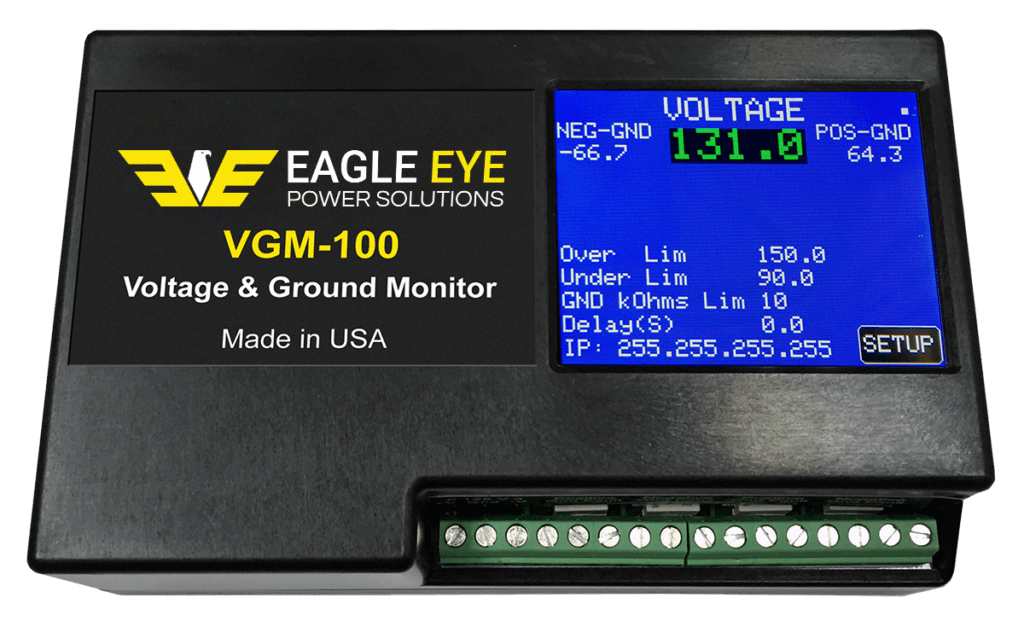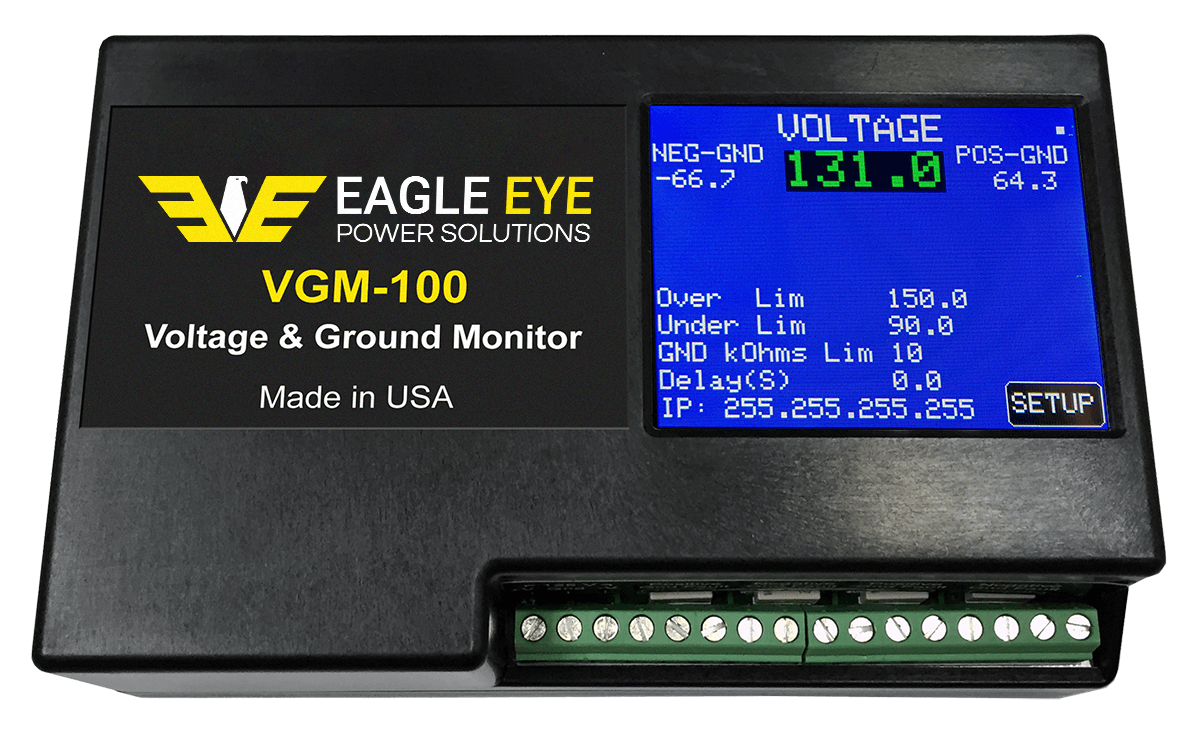Specifications
| Measurement Range | Battery Voltage: 18-32, 38-60, 90-160, 180-320 VDC
Fault Resistance Limit Set: 1 – 100 kOhm |
|---|
| Fault Resistance Limit Set | 1 – 100 kOhm |
|---|
| Output Contacts | (4) Form C |
|---|
| Contact Rating | 125 VAC/VDC: 0.5A
30VDC: 2A |
|---|
| Maximum Switching Power | 60 W |
|---|
| Power Requirements | Powered by connected battery DC voltage |
|---|
| Noise Immunity | IEEE/ANSI Standard C 37.90a-1989 compliance |
|---|
| Time Delay to Alarm | Adjustable 1 – 999 seconds |
|---|
| Operating Environment | Temp: 0 – 55°C (32 – 131°F), Humidity: 0 – 95% RH |
|---|
| Dimensions / Weight | 147 x 91 x 45 mm (5.77 x 3.56 x 1.77 in) / 284 g (10 oz) |
|---|
FAQs
How does the VGM detect ground fault conditions?
DC ground fault detection is determined by measurement of the voltage imbalance relative to ground. These measurements are made through very high resistance divider networks. One establishes the ground reference, and the other measures the positive and negative DC voltages. These values are applied to analog-to-digital converters, and the microcontroller firmware compares the sum of these DC values to the ground reference. If the sum is 0, the DC voltage is perfectly balanced relative to ground. If the sum is positive or negative, the DC voltage is unbalanced positive or negative. User settings determine the extent of imbalance that will result in an alarm condition.
Will the VGM detect a ground fault via a leaked battery jar?
The system would detect a ground fault via a leaked battery provided the ground fault resistance setting (a user setting) was set to the proper value. Since a leaking jar would result in a path to ground of some resistance, the VGM would sense the resulting voltage imbalance and would alarm, provided the path to ground created by the leak was of a resistance lower than that setting.
What is the k ohm limit for ground detection?
Up to 300k ohm.
What is are the contact ratings for the Form C contacts?
The relays have a contact rating of 60W, with a maximum voltage rating of 220VDC, and a maximum current rating of 2A. With these ratings, this relay can switch 2A at 30VDC or less, 0.5A at 125VDC, but only 0.009A at 220 VDC. An external relay would be needed if the customer wanted to increase the rating past the limit.
Do the connections between the monitor and the batteries need to be fused?
No, the monitor has a built in fuse to protect the monitor. However, you may want to fuse the connections to protect against the possibility of a short circuit occurring in the wiring to the monitor.
Is the VGM CSA certified?
The VGM-Series is CE certified. For Canadian customers, CSA certification is not required on DC powered units. Please contact Eagle Eye with any questions on certification requirements.




